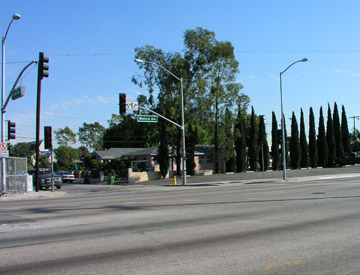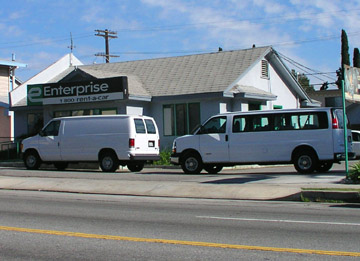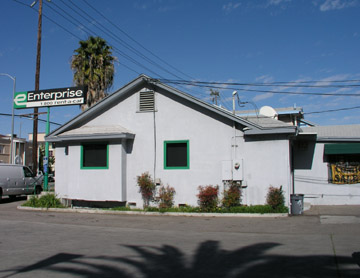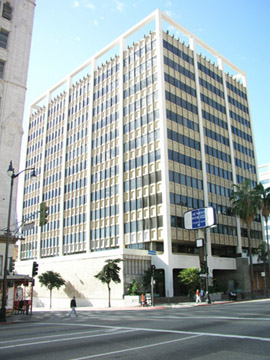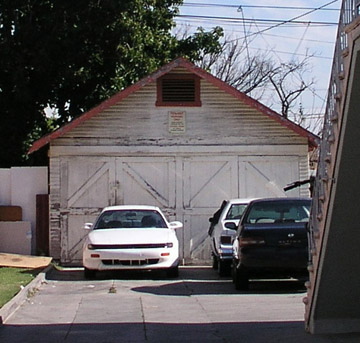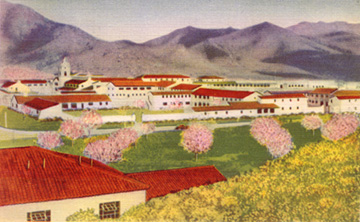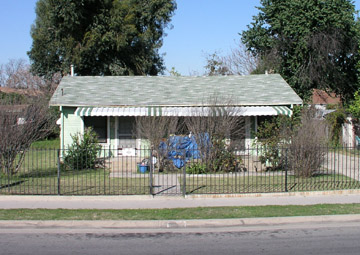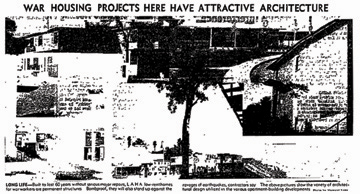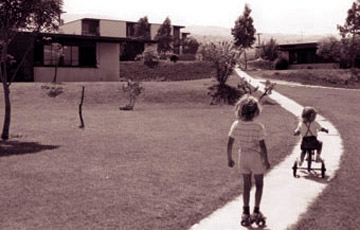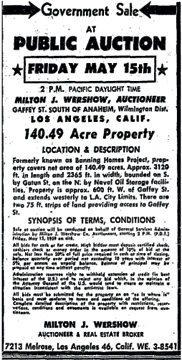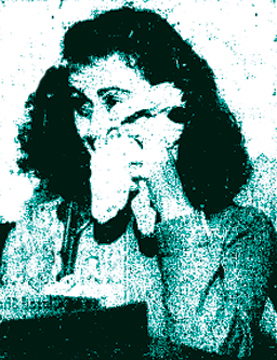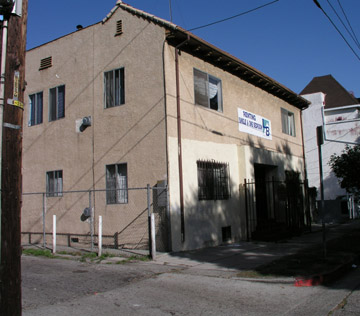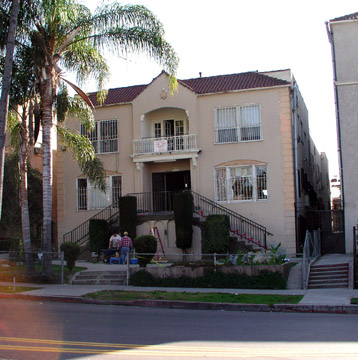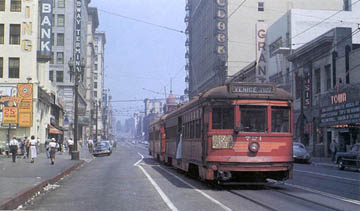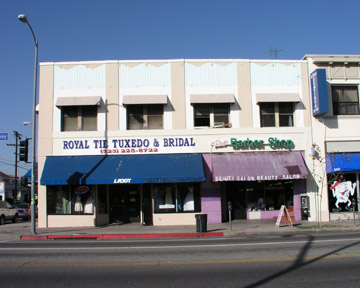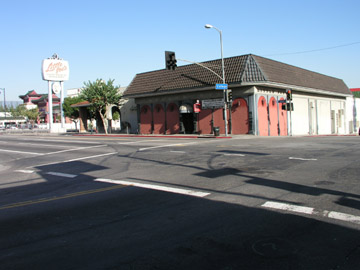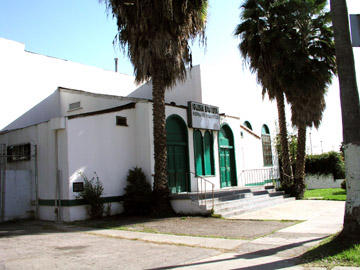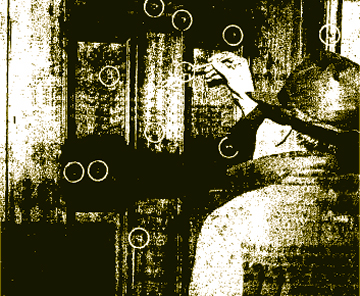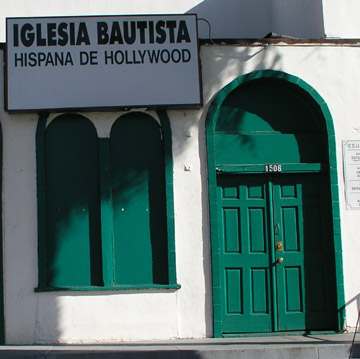A landfill full of splintered spindlework. Endless acres of white oak and Douglas Fir torn asunder, the bulldozer demolishing uncountable Queen Annes and Eastlakes, its unquenchable hunger for turreted towers and gabled gothic left unchecked. Midcentury Los Angeles was hot for Bunker Hill and Orange Grove Avenue and the very street you live on. The widows walk no more.
That was then, and this is now, and now, now we lose postwar LA. There’s a fight for Lincoln Place, there’ll be a fight for the Fabulous Forum, and we’ll have to shove long spiked poles into the graves of Millard Sheets and Welton Becket and Stiles Clements to cease their ceaseless spinning. Bit by bit, structure by structure, it goes. I’ve gone on about this before.
In any event, here are some simple, quiet buildings, wonderful examples of their type which, unlike press-grabbers like the Ambassador, will disappear unnoticed. They’re a lot like the ones in your neighborhood, you know, which, I might add, are probably just as threatened. Soak up old LA while you can.
Ulrich Plaut, 1949:
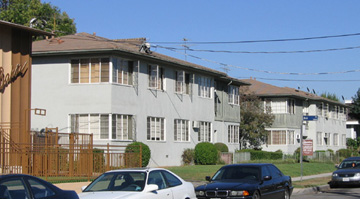
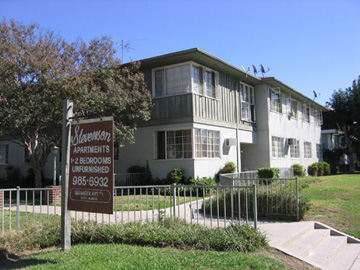
Architect unknown, 1959:
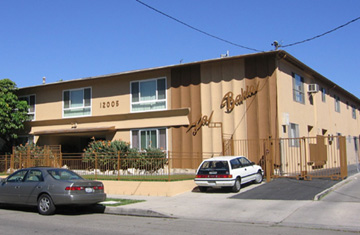
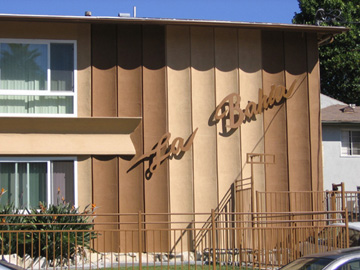
For the record, I lifted this info and these images from here.
Gary Schaffel hasn’t taken his Albers St. plans to the planning department yet, but he has informally cued his tenants to the impending evict & demolish scene. (Schaffel is the guy taking out the 1950 Stevens Nursery [Laurel Canyon & Riverside]. Turning that into 96 condominiums, via four-story blocks of stucco.)
We hear all about the need for affordable housing, yet Albers Street is another instance of a property owner demolishing (these are rent-controlled) in order to do away with such nuisances. The next time you hear some politico speak on the forthcoming affordable housing mandate, ask them why they don’t maintain the affordable housing they already have?
Should the Valley’s residents had an opinion on the matter-say, they preferred a bit of green space, or “neighborhood” sized buildings that contribute to a livable environment, over an endless chain of forty-foot stucco mountains-they could let the developers of the world know that it’d be appreciated if they stopped trawling around the ‘hood.
